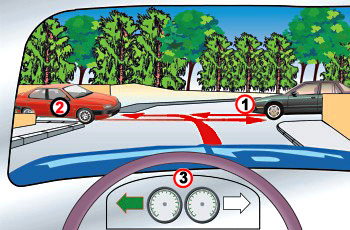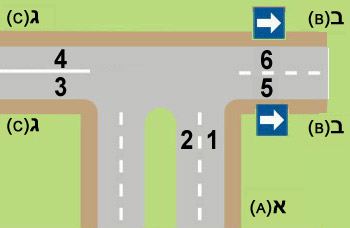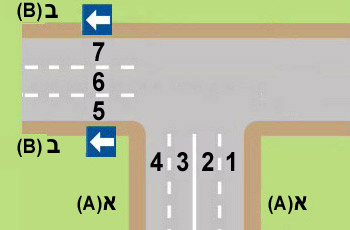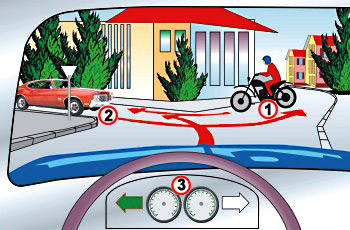Question:1
Who is allowed to drive against traffic in a one-way street?
Category : Rules and Regulations
Question:2
Is it permitted to stand a vehicle less than twelve meters from a junction?
Category : Rules and Regulations
Question:3
From the answers before you, where especially should a driver slow down?
Category : Rules and Regulations
Question:4
How should you conduct yourself when exiting premises, a gas station or an access road to a house?
Category : Rules and Regulations
Question:5
When is it allowed to use the horn?
Category : Rules and Regulations
Question:6
When pedestrians are forced to walk on the road way, on which side of it should they walk?
Category : Rules and Regulations
Question:7
Is the Licensing Authority (Licensing Bureau) permitted to delay the renewal of a driving license for a person who has a pending fine?
Category : Rules and Regulations
Question:8
A policeman may stop a vehicle and have it checked:
Category : Rules and Regulations
Question:9
When a vehicle is forced to stop on an inter-urban road and the driver or one of the passengers is about to exit the vehicle:
Category : Rules and Regulations
Question:10
What is a “vehicle non-use notice” (taking a vehicle off the road)?
Category : Rules and Regulations
Question:11
Who is held responsible for a vehicle causing excessive noise?
Category : Rules and Regulations
Question:12
There are no traffic signs placed in the following intersection, According to the rules of giving right-of-way, in what order should vehicles that arrived at the same time enter the intersection?

Category : Rules and Regulations
Question:13
When is it forbidden for a person to drive any type of vehicle?
Category : Rules and Regulations
Question:14
From which side are we permitted to overtake another vehicle?
Category : Rules and Regulations
Question:15
Within which distance from a tunnel is it prohibited to overtake?
Category : Rules and Regulations
Question:16
Define “stop line”:
Category : Rules and Regulations
Question:17
The following illustration shows an intersection with traffic signs. What is the correct manner of making a turn from street A to street C?

Category : Rules and Regulations
Question:18
What should you do when your driving lane is obstructed?
Category : Rules and Regulations
Question:19
When entering a curve and driving through it a driver is required to:
Category : Rules and Regulations
Question:20
Which of the following vehicles is allowed to drive against traffic on a one-way road?
Category : Rules and Regulations
Question:21
Can a temporary sign, which is posted under the direction of a police officer, be regarded as a legitimate traffic sign?
Category : Rules and Regulations
Question:22
What is a driver required to do when there’s a change in his health condition?
Category : Rules and Regulations
Question:23
When is it required to turn-on the motorcycle’s headlights while driving?
Category : Rules and Regulations
Question:24
Where in the vehicle should the fluorescent vest be kept (except for motor-cycles)?
Category : Rules and Regulations
Question:25
How should a driver turn left from a two-way road (A) to a one-way road (B)?

Category : Rules and Regulations
Question:26
Is it permitted for vehicle drivers to drive under the influence of drugs or alcohol?
Category : Rules and Regulations
Question:27
“Reasonable speed” is a speed:
Category : Rules and Regulations
Question:28
A policeman wrote you a traffic report due to “deviation from your lane”, and there are no lanes marked on the roadway. Is it justified?
Category : Rules and Regulations
Question:29
How would you (vehicle no. 3) conduct yourself in the following intersection?

Category : Rules and Regulations
Question:30
Within what distance of a bus stop is it forbidden to stop a vehicle?
Category : Rules and Regulations

